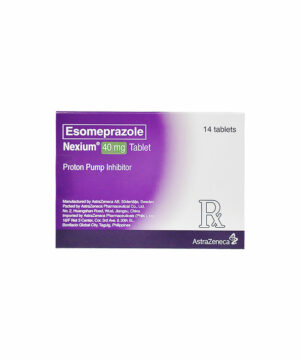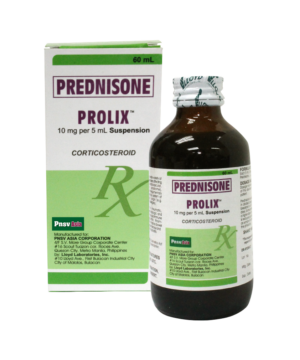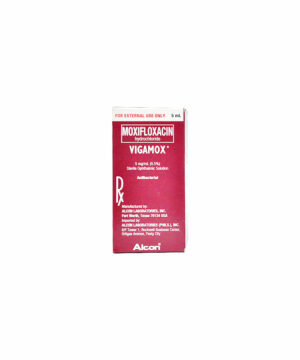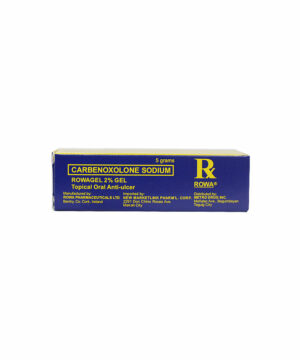Description
PLETAAL 50MG TABLET
Description :
Cilostazol occurs as an odorless and tasteless, white to pale yellow-white crystals or crystalline powder. It is freely soluble in chloroform, soluble in dimethylformamide, benzyl alcohol and a mixture of chloroform and methanol (1:1), slightly soluble in methanol and ethanol, and practically insoluble in water and absolute ether.
Cilostazol is 6-[4-(1-cyclohexyl-1H-tetrazol-5-yl)butoxy]-3,4-dihydro-2(1H)-quinolinone. Its molecular formula is C20H27N5O2 and has a molecular weight of 369.47. Melting point: 158-162?C.
Indications / Uses :
Treatment of ischemic symptoms, including ulceration, pain and coldness of the extremities in chronic arterial occlusion.
Prevention of recurrence of cerebral infarction (excluding cardiogenic cerebral embolism).
The effects of Pletaal on cerebral infarction have not been studied in patients with asymptomatic cerebral infarction.
Administration :
Should be taken on an empty stomach: Take at least ? hr before or 2 hr after meals. Empty the contents of sachet in the mouth & swallow w/ water or saliva.
Contraindications :
Patients with a history of hypersensitivity to any of the ingredients of Pletaal. Patients with hemorrhage (eg, hemophilia, increased capillary fragility, intracranial hemorrhage, hemorrhage in the digestive tract, hemorrhage in the urinary tract, hemoptysis and hemorrhage in the vitreous body). (Bleeding tendency may be increased.) Patients with congestive heart failure. (The condition may be worsened.) See Precautions.
Special Precautions :
Pletaal should be administered with caution in the following:
Patients on anticoagulants (eg, warfarin), antiplatelet drugs (eg, aspirin, ticlopidine), thrombolytic drugs (eg, urokinase and alteplase), prostaglandin E1 or its derivatives (eg, alprostadil and limaprost alfadex) (see Interactions).
Patients during menstruation. (There is a risk of menorrhagia.)
Patients with bleeding tendency or predisposition to bleeding. (When bleeding does occur, the bleeding tendency may be increased.)
Patients with coronary artery stenosis. (Increased pulse rate possibly resulting from treatment with Pletaal could induce angina pectoris.) (See Warnings, Precautions and Adverse Reactions.)
Patients with diabetes mellitus or abnormal glucose tolerance. (Hemorrhagic adverse events may occur.)
Patients with severe hepatic impairment. (The blood concentration of cilostazol may be increased.) (See Pharmacokinetics under Actions.)
Patients with severe renal impairment. (The blood concentration of cilostazol and its metabolites may be increased.) (See Pharmacokinetics under Actions.)
Patients with severe hypertension with consistently high blood pressure (eg, malignant hypertension). (See related text as follows.)
Important Precautions: Pletaal should not be administered to patients with cerebral infarction until their condition has stabilized.
If an excessive increase in pulse rate is observed in patients with coronary artery stenosis during treatment with Pletaal, the dosage should be reduced or the drug discontinued and the appropriate corrective measures taken, since the increased pulse rate could induce angina pectoris. (See Warnings, Actions and Adverse Reactions.)
Pletaal is a drug with PDE3 inhibitory activity. Long-term comparative studies of cardiotonic agents with PDE3 inhibitory activity (milrinone and vesnarinone) in patients with congestive heart failure (NYHA class III-IV) conducted outside Japan demonstrated lower survival rates in patients receiving such cardiotonic agents compared with patients receiving placebo. In addition, prognosis following long-term treatment with PDE3 inhibitors, including Pletaal, has not yet been determined in patients without congestive heart failure.
Others: Endocardial thickening and coronary arterial lesions were observed at high doses in 13- and 52-week oral repeated-dose toxicity studies of cilostazol in beagle dogs. The nontoxic doses were 30 and 12 mg/kg/day, respectively. These cardiac changes were not observed in either rats or monkeys. In 1-week IV repeated-dose cardiotoxcity studies, changes in the left ventricular endocardium, right atrial epicardium and coronary arteries were observed in dogs and mild hemorrhagic changes in the left ventricular endocardium were observed in monkeys. Cardiac changes have also been reported in studies of other PDE inhibitors and vasodilators, and dogs are considered to be highly sensitive in showing such changes.
The mean survival time of stroke-prone spontaneously hypertensive rats (SHR-SP) given 0.3% cilostazol in the diet was shorter than that of control animals (40.2 weeks vs 43.5 weeks).
Diabetes mellitus or aggravated diabetes mellitus was observed with higher incidence in patients treated with Pletaal (2.1%) than in placebo (0.2%) in long-term administration of Pletaal in a study conducted in Japan to evaluate the drug’s efficacy in the prevention of recurrence of cerebral infarction.
Co-administration of a single dose of lovastatin* 80 mg with a single dose of Pletaal 100 mg increased lovastatin AUC by 64% compared with administration of lovastatin alone.
Use in lactation: Nursing should be suspended during use of the drug by nursing women. (Rat studies showed that Pletaal was secreted to breast milk in nursing rats.)
Use in children: The safe use of Pletaal in premature babies, newborns, suckling infants, infants and children has not been established. (Clinical experience in these populations is insufficient.)
Use in the elderly: Elderly patients may be physiologically more sensitive to Pletaal than younger patients. It may be necessary to reduce the dosage when prescribing Pletaal to elderly patients.
Caution for Usage
Patients should be instructed to remove the tablets from the foil sheet before taking the medication, because swallowing of the foil sheet has led to serious complications eg, esophageal perforation and mediastinitis.














Reviews
There are no reviews yet.